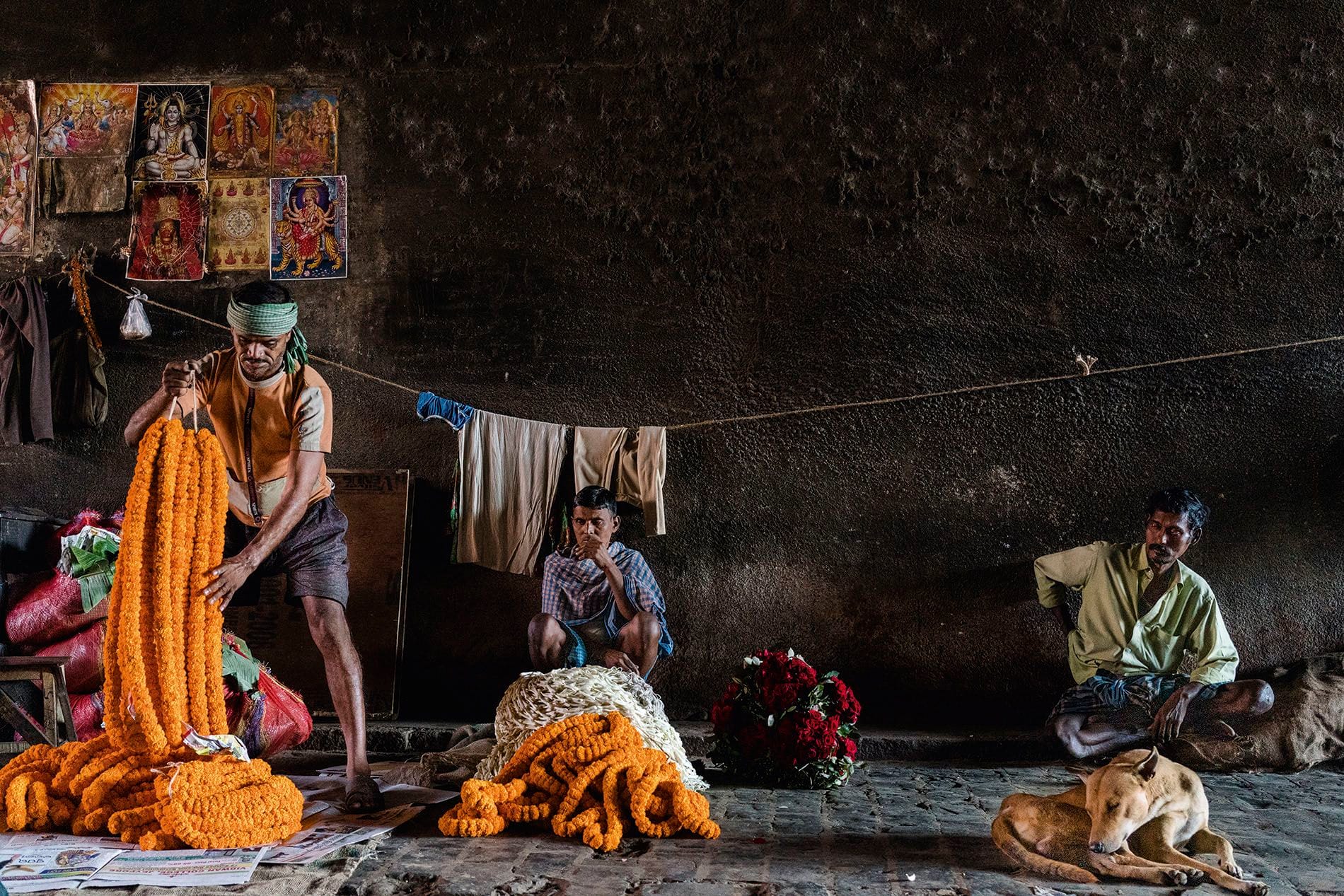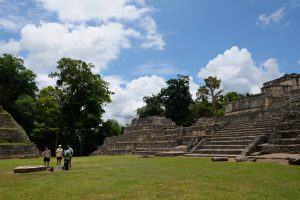
Look beyond Kolkata’s colonial past and you’ll find the colourful street food stalls of Grey Town, the Hooghly’s buzzing riverbanks, and a cafe culture alive with spirited debate. The Bengali capital is no faded museum piece
View online at nationalgeographic.co.uk/travel
To explore Kolkata is to plunge into a state of perpetual overwhelm. The soulful yet chaotic one-time capital of the British Raj confounds expectations at every turn. This is due, in part at least, to its limited reputation. A whole generation know Kolkata — or Calcutta as it was called until 2001 — solely through the lens of Mother Teresa’s saintly work with destitute pavement-dwellers. But instead of a sprawling, dispiriting metropolis, Kolkata serves up a compact centre full of romantic relics of the British Raj, colourful riverfront ghats (wharfs) and a cosmopolitan party scene. It’s all easily navigated by the metro system — or old-fashioned rickshaw. One of the city’s charms is its countless anachronisms: its trams and eccentric guesthouses full of Victoriana. Delightful discoveries become as common as the clay chai cups that fill the city’s gutters; each as delicious as the Bengali confectionery sold on every street corner.
“The essence of an old city is its secrets,” says my guide Anirban of Calcutta Walks, as we head into Grey Town, which ranges from Bowbazar to Burrabazar. The historic labyrinth of Portuguese, Chinese and Armenian communities (and many more besides) was founded around the mid-18th century when Bengal became the booming hub of the East India Company. The district is one of Kolkata’s more important albeit least celebrated sights: these immigrants contributed to the city’s economy and cultural makeup in myriad ways.
While Kolkata postcards might carry the spectacular edifices of the Victoria Memorial (the British answer to the Taj Mahal) or the Marble Palace (the faded neoclassical folly of a wealthy Bengali merchant), Grey Town’s attraction is less easily captured. A tour, as Anirban explains, involves time travel.
“This isn’t Delhi, where history has become a museum. In Kolkata, you can smell and taste and experience our past,” Anirban says with unconcealed civic pride, adding, “if you know where to look.” In the cool of early morning, we pound the uneven pavements to explore the old Taoist temples, former opium dens and squawking poultry market of Chinatown, where we chat with the descendants of early settlers while sharing steamed momo dumplings. Entering the Islamic quarter, its buildings fluttering with Eid bunting, feels like stepping across continents. In a lane of halal butchers, men in white taqiyah caps and tunics lean against doorways and sip chai, while cats weave around their ankles hoping for meat scraps.
One of our last stops is Ajmiri, an unassuming bakery founded generations ago by a Jewish family fleeing persecution in Iraq, where we snack on coconut cookies — a recipe that’s remained unchanged through the decades. “This is where some of the city’s top hotels buy their Christmas fruitcake. Food in Kolkata is a great leveller,” Anirban explains. We end the tour in the Magen David Synagogue which, in a perfect distillation of the area’s tolerant, melting-pot heritage, shares a street with a Portuguese cathedral and an Armenian church. Nearby, a Parsi fire temple houses a sacred flame that’s been burning since 1912. “Today there are only 16 Jews in Kolkata. Once, the congregation in the area was 8,000,” my guide laments. “People say the city is dying, that it’s been dying for over a century. But that’s a lie. Nowhere with this much soul could ever die.”
See & do
Victoria Memorial: Built to commemorate Queen Victoria, this towering monument was completed in 1921, a decade after the capital of the British Raj was moved to Delhi. The white marble memorial combines Italianate columns and statuary with Mughal domes reminiscent of the Taj Mahal. Stroll the grounds and lake, and don’t miss the Calcutta Gallery inside, where old paintings and photographs document daily life, and the city’s independence struggles. Neighbouring St Paul’s Cathedral with its epitaphs to early Imperialists is worth a visit.
Mother House: Albanian-born Anjezë Gonxhe Bojaxhiu, known to the world as Mother Teresa, earned her sainthood on Kolkata’s streets caring for the destitute and dying. Her simple tomb is housed in the headquarters of her organisation, the Missionaries of Charity, where there’s also a small museum to her life and work, as well as her humble bedroom-cum-study preserved for posterity.
Marble Palace: This neoclassical mansion, built in 1835 by prosperous Raja Rajendra Mullick, still houses his descendants and their menagerie of exotic birds. A monument to the excesses that abounded in Kolkata’s heyday, its grandeur has faded with the city’s fortunes, but the sweeping staircase and mirrored ballrooms are still dripping with chandeliers, stuffed with statues and hung with gilt-frame paintings, including works by such European Masters as Rubens and Reynolds. To visit, get a free pass from the tourism office at 4 Shakespeare Sarani.
The Grey City Walking Tour: A walking tour is the best way to understand the melting pot of immigrant cultures that formed around Burrabazar during Calcutta’s trading heyday. The Grey City, as it was known under the Raj, was shaped by Chinese, Portuguese, Jewish, Parsi and Armenian settlers — to name but a few. Those communities are dwindling rapidly, but the grand synagogues, opium dens, decaying tenements and street food stalls linger on.
Indian Museum: India’s oldest and largest museum is known as Jadu Ghar, meaning ‘house of magic’. Its 35 galleries, set around a colonnaded central garden, house a rare collection of curios, including fossils and meteorites, many encased in old-fashioned mahogany display cabinets, as well as impressive Mughal-era artwork and priceless Indian carvings.
Botanical Garden: Escape the hustle and bustle and head to the Hooghly’s west bank, where Kolkata’s 273-acre Botanical Garden offers walks along the river promenade, an orchid house, a herbarium and fern house, plus plenty of bird watching opportunities. It’s also where you’ll find the world’s largest banyan tree: 80ft high and an astonishing 787ft in circumference.
Buy
New Market: Founded in 1874 as a shopping quarter for British residents, and still known locally as Hogg Market after Sir Stuart Hogg (a director of the East India Company), this sprawling, red-brick arcade with its gothic clock tower is now very much an Indian affair. Chaotic and overwhelming, and patrolled by locals looking to guide tourists, New Market sells everything under the Indian sun, from sarees to meat. If you can find them in the maze, Tibetan curio shop Chamba Lama and the legendary Jewish confectioner Nahoum’s Bakery are well worth a visit.
College Street: The world’s largest book market occupies the pavements of this thoroughfare at the heart of the University of Calcutta. Sellers perch upon stacks of literature — some new, some rare, some ancient; a joy for any bibliophile.
Fab India: This upmarket women’s clothing chain has a handful of branches in the city, where shop assistants are on hand to help foreigners learn their salwar kameez from their kurta. Clothes are hand-printed with natural dyes, and loose-fitting cotton designs are recommended for the city’s tropical temperatures.
Like a local
Kumartuli: This low-rise neighbourhood of narrow lanes in the north of the city is home to the messy, fascinating workshops and storehouses of Kolkata’s kumars: traditional potters who sit out on the pavements and sculpt fearsome, multi-armed Hindu gods and goddesses from straw and river clay. It’s the place to start understanding Bengal’s strong tradition for arts, and its favoured Hindu gods. In the run up to Durga Puja (the state’s largest religious festival), the area is a hive of activity.
Eden Gardens: One religion that’s common to the whole subcontinent is cricket, and few sporting experiences are as fevered and chaotic as a Test match in Kolkata’s ‘coliseum of cricket’. Eden Gardens seats about 68,000, making it the second-largest cricket stadium in the world by capacity. Check out the website of local team, the Kolkata Knight Riders, for fixtures.
Street food: The best of the city’s on-the-go grub are paratha wraps filled with kebab meat, paneer cheese, egg and spiced potato, dressed with chili and lime, known as kathi rolls. Look for Kusum, a stall just off Park Street, where the lunchtime queues are a testament to the chef’s skills.
Sleep
Sunflower Guest House: This characterful heritage building offers cheap rooms (some with air con) in the heart of the city — just a stone’s throw from the shopping area of Park Street. Rooms are clean, if a little dark, and it’s fun to ride up the heart of the stairwell in the antique cage elevator.
The Elgin Fairlawn: Even if you’re not a guest, drop by for a sundowner in the garden. Poking around the memorabilia-filled halls of The Fairlawn is to get a taste for the grandeur and eccentricity that lingers on in Kolkata from its colonial days. This beloved Sudder Street institution, which opened in 1936 in a 19th-century manor, passed out of family hands to become an Elgin Hotels property last year, and has recently refreshed its pleasant guestrooms.
Oberoi Grand: One could quickly run out of superlatives when describing eastern India’s grandest hotel. The sumptuous neoclassical building occupies an entire city block, making it a island of sophistication and old-world luxury. If the ballroom walls could speak, they’d tell a century-worth of stories of about film stars, politicians and royalty.
Eat
Indian Coffee House: Just off College Street, in the city’s academic heartland, this large upstairs hall has served as the meeting place for the city’s intelligentsia for generations. The coffee is famously terrible, but there’s nowhere better to get to grips with the Bengali culture of adda (spirited debate). 15 Bankim Chatterjee Street.
Kewpie’s:This is a bit like dining in someone’s home. The cosy Bengali restaurant is buried in a residential area, so is hard to find and there’s no sign outside. Its thalas (platters) provide a tour through the region’s best-loved, home-cooked curries, and end with a roll of chewing paan. 2 Elgin Lane.
The Park: This five-star hotel has a well-deserved reputation for some of the finest dining in town. Join locals toasting special occasions over a rich Bengali rajbari feast at the recently revamped Saffron, or check out Zen for contemporary Asian cuisine served with flare.
After hours
The Park:This urban-chic, five-star hotel has a famously funky underbelly. The wood-paneled Someplace Else bar draws in students and rockers with live music, while the city’s well-heeled crowd head to Tantra for international DJs or 1960s-themed cocktail club, Roxy, to dance and be seen. There’s also a poolside lounge space, Aqua, that’s perfect for those humid evenings.
Peter Cat: This long-standing Park Street restaurant is famous for its Persian-style chelo kebabs and classy cocktail menu. Despite its suited waiters and smart decor, the vibe is decidedly relaxed. It’s one of Kolkata’s go-to watering holes. 18a Park Street.
Phoenix: This recent addition to the bar scene is packed out at the weekends with young professionals sipping whiskey sours. Bare brick walls and chic LED installations lend a modern, industrial vibe to the space inside the Victorian-era Astor hotel.
Essentials
Getting there & around:
Emirates flies from Heathrow to Netaji Subhash Bose International Airport (known locally as Dum Dum) with a stopover in Dubai. Average flight time: 15hr.
To travel into the city (a little over 10 miles south of the airport) by taxi, it’s better to pick up a ticket from the airport’s prepaid taxi booth rather than flagging a cab yourself.
Kolkata has a clean, efficient and inexpensive metro system operated by tokens for single journeys or smart cards for multiday travel. A few tram routes are still in operation, a complicated bus network exists and overcrowded ferries operate on the Hooghly. Taxis are by far the easiest way to get around. Choose from yellow and black metered cabs, get an Uber or Ola car via their apps, or phone for a ‘radio taxi’ from reputable firms like Kolkata Cabs. calcuttaweb.com
When to go:
Kolkata’s tropical climate is best during the short winter between November and February when the temperature rarely exceeds 27C. By May, the heat and humidity of summer are in full swing, with temperatures often exceeding 40C (although early mornings and dusk still offer pleasant temperatures to sightsee). Monsoon rains occur between June and October.
More info:
incredibleindia.org
How to do it:
Inspiring Travel Company offers a three-night break in Kolkata from £1,349 per person based on two sharing, including return flights from the UK to Kolkata, three nights at the Oberoi Grand, B&B, sightseeing and transfers.
Published in the May 2019 issue of National Geographic Traveller (UK)











